Regress and Practice
Regressing to a previous variation in the progression is not something to look down on. In fact, I do it myself to this day. If you experience issues with something, no matter how small, you may need to regress to a previous and easier variation of what you’re working on. You may need to regress to bodyweight only and drill the movement.
Drilling the movement with pauses, i.e. breaking the exercise movement down into bits and replicating those without any weight. An example of the hip hinge swing follows.
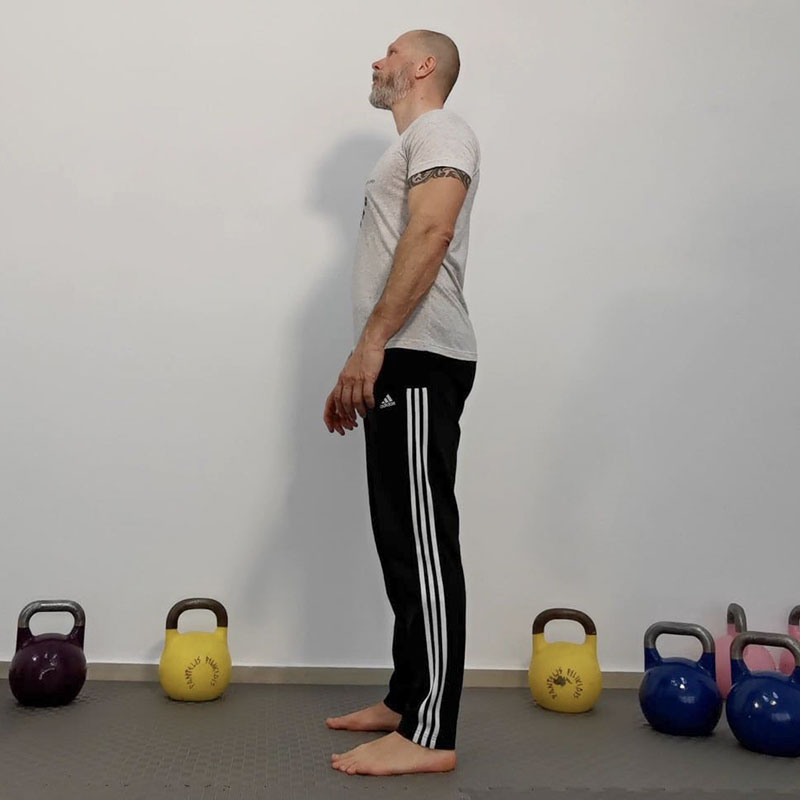
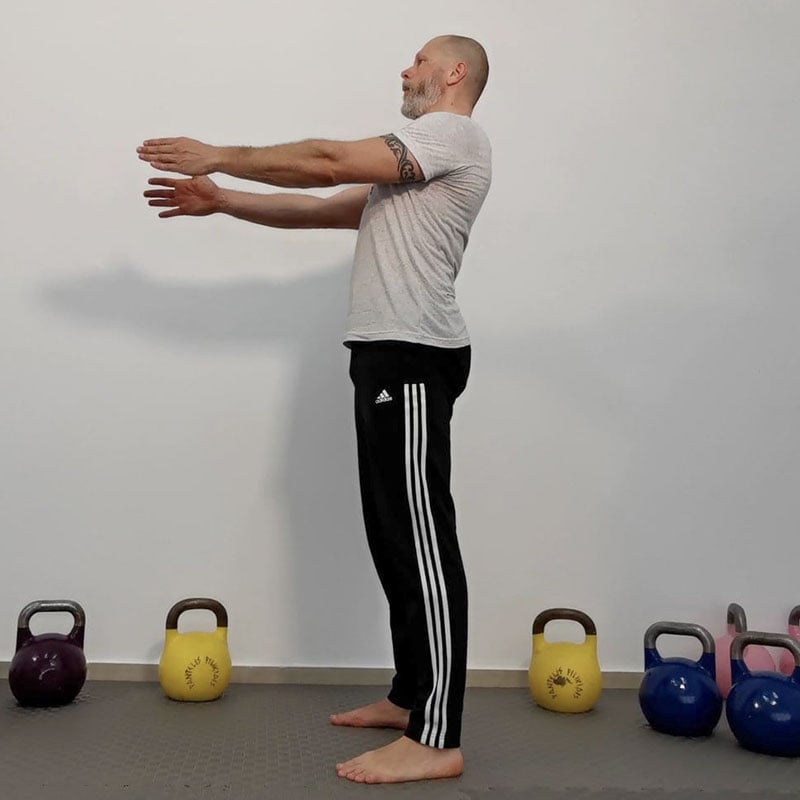
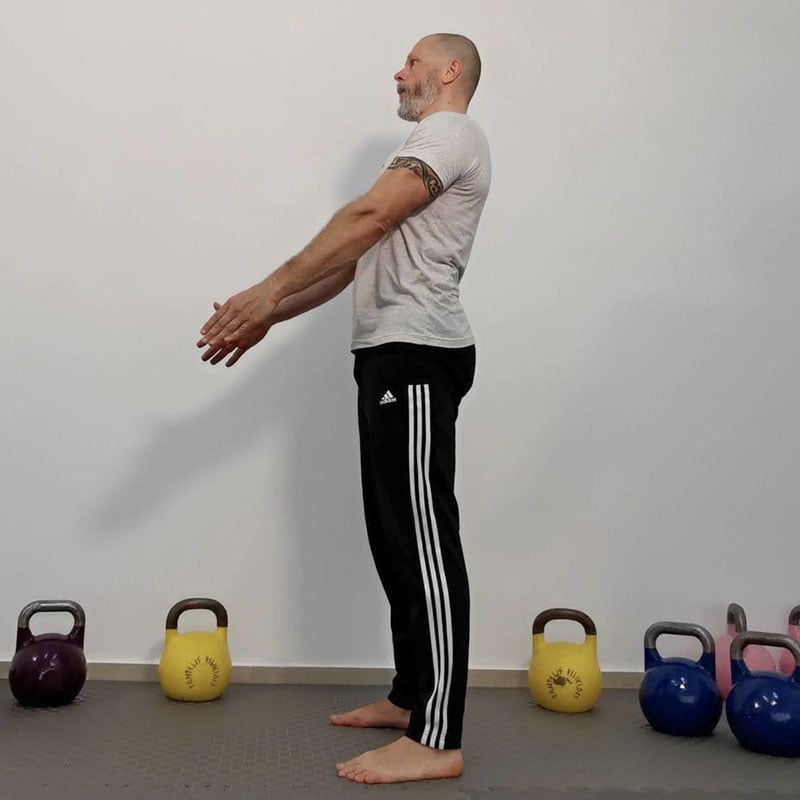
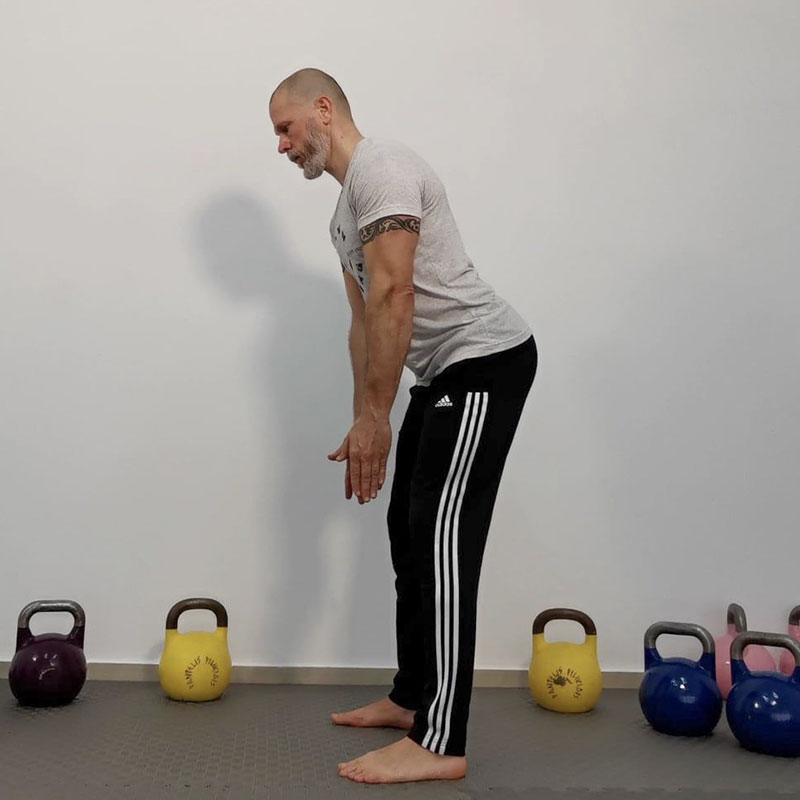
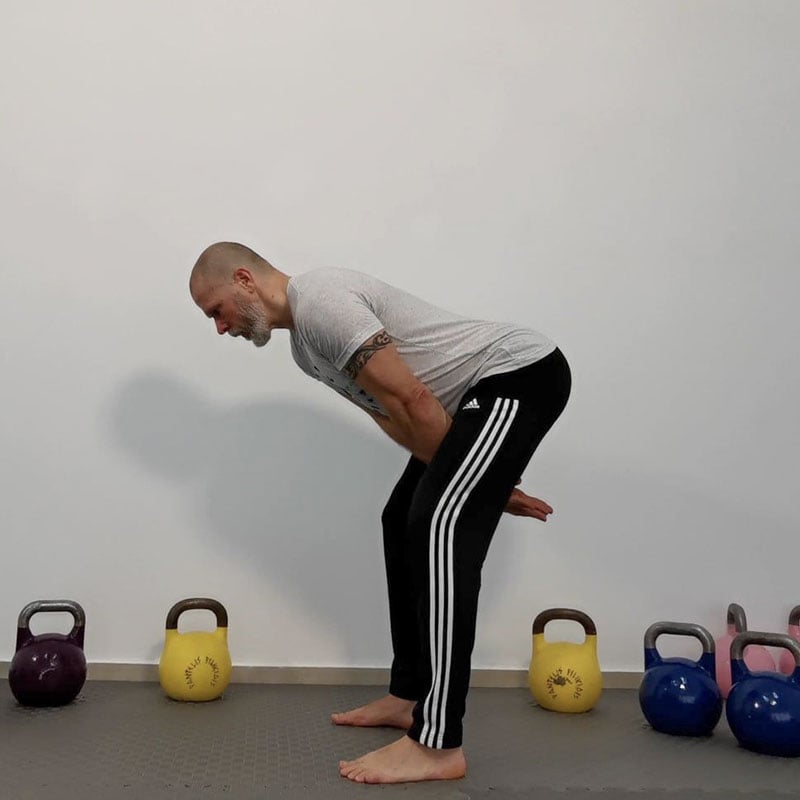
Taking the double-arm kettlebell swing as an example, the hip hinge movement is the same but not the arm extension. This is just to bring across the concept of drilling a movement pattern without weight and focusing on the key moments.
The example shows:
- Stance
- Top of the swing
- How long you should wait before hinging
- Flexion at the hips and knees
- Inserting the weight
In each one of these positions, you would stay for a few seconds to feel everything and get to know the position and movement so that you recognize it when you do it faster.
The above drill is something you would do when you are having issues with the delay of bending at the knees and hips. You can do the same with any movement that you’re working on. You do have to keep in mind that there are variations of movements and that it changes as you go heavier.
When you get toward the high end of heavy, then you will find that things like the ankles not moving will almost become impossible, you will find that you need to lean back more on the upswing and on the drop, etc.
You can easily stand straight when you have a light to medium weight and drop it from racking into a backswing. However, when you are working with heavy to maximal weight then you need to start thinking about creating a counterbalance, this means, moving away from the weight that is moving away from you.
If you let a heavy weight fall away from you and you stand straight, it will pull you forward, which means you enter the “Following the kettlebell” phase. If you move away from a heavy weight that is falling away from you then it’s a whole lot easier to control it and not let it pull you forward. This is the part where I mentioned not everything is Black or White. There are so many different goals and scenarios that you need to start thinking about these things before you comment on someone’s form and technique.
With that said, this is not the right topic, but a good opportunity to bring up the following. Don’t provide feedback on people’s form and technique on the internet unless they ask for it. If they asked for it, they need to have provided exactly what they are doing, and which variation of what exercise. If they do not provide that, then you will be making assumptions on what you see and bias.
High Insertion
A great drill I developed is what I call High Insertion, i.e. the kettlebell is brought higher than normal, and hand insertion takes places higher than normal. This is a good drill to practice hand insertion but is also good to use when the kettlebell always comes too high and bangs on your forearm.
In other words, you’re not getting the power generation right, the kettlebell comes too high and then creates an impact on the forearm which turns into bruising. However, with the high insertion you are not waiting for the weight to come to you and bang, you will go to the kettlebell and catch it through high insertion.
An external video follows.